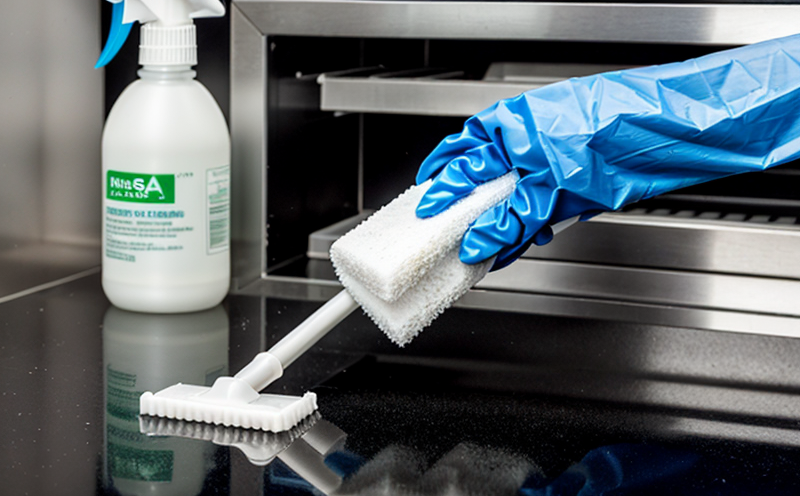ISO 846 Plastics Resistance to Microorganisms Testing
The ISO 846 standard is a critical tool in assessing the resistance of plastics and similar materials to microbial contamination. This testing method evaluates the ability of plastic materials to resist the growth of microorganisms, ensuring that products meet stringent hygiene requirements.
Hygiene is paramount in sectors where contact with human skin or surfaces is frequent, such as healthcare, food service, and personal care industries. The ISO 846 test provides a standardized approach to determine how effectively a plastic material can prevent the adhesion and growth of microorganisms like bacteria, fungi, and yeasts.
The testing process involves exposing plastic specimens to controlled environments with specific types of microorganisms under defined conditions. Specimens are then incubated for an extended period, after which they undergo microscopic examination to assess any microbial growth. The results provide insight into the material's resistance properties, enabling manufacturers to make informed decisions about their product designs and materials.
For instance, in the healthcare sector, ensuring that medical devices or packaging have sufficient resistance to microorganisms is essential for patient safety. Similarly, in food packaging applications, resistance to microbial contamination helps prevent spoilage and maintains hygiene standards throughout the supply chain.
The ISO 846 test not only evaluates the material's resistance to contaminants but also considers its long-term performance under various environmental conditions. This comprehensive approach ensures that products meet regulatory requirements and consumer expectations for safety and hygiene.
Understanding the scope of the testing is crucial for manufacturers, as it involves more than just a static measurement of material properties. It requires an in-depth understanding of how microorganisms interact with plastics and what factors influence their growth. This includes considering factors such as surface roughness, chemical composition, and environmental conditions.
The test procedure typically involves several steps: specimen preparation, inoculation with specified microorganisms, incubation under controlled conditions, observation for microbial growth, and reporting of results. Each step is meticulously designed to ensure accurate and reliable outcomes. Manufacturers can then use these results to refine their product designs, select appropriate materials, and implement effective hygiene measures.
The ISO 846 test is widely recognized in industries where hygiene standards are critical. It is particularly relevant for products that come into direct contact with human skin or surfaces, such as medical devices, surgical instruments, and personal care items. By ensuring compliance with this standard, manufacturers can enhance the safety and effectiveness of their products while meeting regulatory requirements.
In summary, ISO 846 Plastics Resistance to Microorganisms Testing is a vital tool for quality managers, R&D engineers, and procurement officers in sectors where hygiene standards are paramount. It provides a standardized approach to evaluate material resistance to microbial contamination, ensuring that products meet stringent hygiene requirements and regulatory expectations.
Why It Matters
The ISO 846 test is essential for maintaining high standards of hygiene in numerous industries. In the healthcare sector, it ensures that medical devices and packaging are safe from microbial contamination, reducing the risk of infections. For food processing plants, compliance with this standard helps prevent cross-contamination and spoilage, ensuring product quality and safety.
The test also plays a crucial role in personal care products, where maintaining hygiene is vital for consumer health. By using ISO 846-compliant materials, manufacturers can enhance the overall safety and effectiveness of their products. This not only meets regulatory requirements but also builds trust with consumers who prioritize hygiene and quality.
Furthermore, this testing method helps to differentiate products in competitive markets by highlighting a commitment to superior hygiene standards. It demonstrates a company's dedication to producing safe, effective, and reliable products that meet the highest industry standards.
The ISO 846 test is not only beneficial for manufacturers but also for regulatory bodies responsible for enforcing hygiene regulations. By ensuring compliance with this standard, these organizations can maintain consistent quality across industries and protect public health.
Applied Standards
| Standard Number | Description |
|---|---|
| ISO 846:1997 | Plastics Resistance to Microorganisms |
| ASTM D2305-09(2014) | Standard Test Methods for Determining the Resistance of Plastics to Fungi |
| IUPAC Recommendations | International Union of Pure and Applied Chemistry recommendations for microbiological testing |
The ISO 846 standard is widely recognized in the industry and is often supplemented by other standards such as ASTM D2305-09(2014), which provides additional guidance on testing methods. These standards collectively ensure that the resistance of plastic materials to microorganisms is accurately assessed, contributing to overall hygiene and safety.
International Acceptance and Recognition
- The ISO 846 standard is recognized globally for its reliability and accuracy in assessing microbial resistance of plastics.
- It has been adopted by numerous countries as a benchmark for quality assurance in various sectors, including healthcare, food processing, and personal care.
- Many regulatory bodies around the world require compliance with ISO 846 to ensure product safety and hygiene standards are met.
- The standard is also widely accepted in international trade agreements, facilitating smoother cross-border transactions.
This widespread acceptance underscores its significance in maintaining high-quality standards across industries. Compliance with ISO 846 ensures that products meet the highest hygiene requirements, fostering trust and confidence among consumers.





